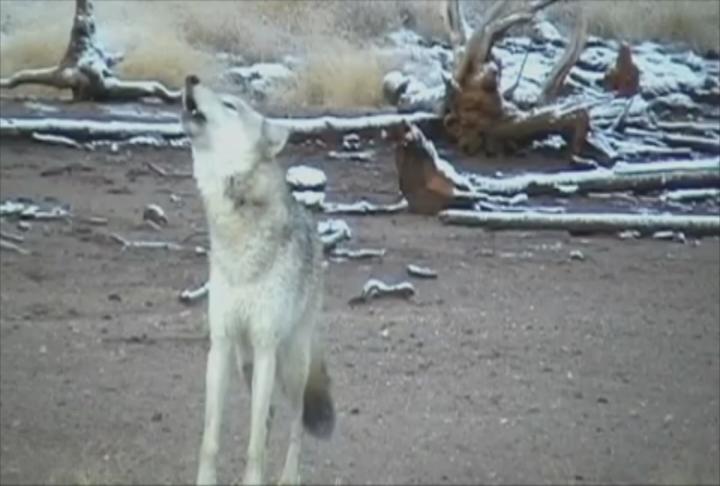
Idaho Wildlife Services recently made public an Environmental Assessment (“EA”)supposedly analyzing statewide predator damage and conflict management. However, wolves are notably absent from the 273-page document. Wildlife Services’ recent killing of five wolves in central Idaho—in addition to previous killings of six in response to livestock depredation and 19 to boost elk populations in the Lolo zone—should cause the public to question the exclusion of a discussion about wolves from the new EA.
The EA says that wolves were not addressed because Wildlife Services already completed a separate EA specific to wolves in 2011. Superficially, the exclusion appears to be a sensible decision to avoid lengthening an already lengthy document. When considered side-by-side, however, the two EAs fail to account for the full spectrum of the effects of predator management.
Mesopredator Release and Trophic Cascades
Decline, extirpation, or reintroduction of wolves can cause “trophic cascades,” whereby lower trophic level populations experience drastic changes following alterations to an apex predator population. The decline of apex predators can affect disease dynamics, wildfires, carbon sequestration, invasive species, and even landscape features such as rivers.
Apex predators “suppress” mesopredators through intraguild predation (i.e. wolves killing coyotes) or resource competition. When apex predators decline or go extinct, mesopredator numbers can drastically increase, a phenomenon called “mesopredator release.” Though the theories have not attained full consensus among biologists, the body of supporting research is growing.
The wolf EA does mention trophic cascades in Yellowstone National Park following wolf reintroduction—but only in the section titled “Issues Not Considered in Detail.” Wildlife Services cited one study from 2004 focused almost entirely on aquatic ecosystems and one book chapter from 2005 by the same scientist that briefly noted that few studies existed on wolf-ungulate-vegetation trophic cascades over areas larger than Yellowstone National Park and Isle Royale. However, enough studies have been published since 2005 for Wildlife Services to meaningfully assess the ecosystem effects of lethal wolf management.
With respect to coyotes, the wolf EA discussed only the direct effects of wolves, citing one study from 1999 and one book chapter from 2003. The EA did not mention other recent research on intraguild predation and indirect effects of wolves on coyotes.
The new statewide EA does mention trophic cascades, again in the section titled “Issues Not Considered in Detail.” Once again, Wildlife Services has chosen not to analyze in detail the potential effects of lethal predator control on other predators, prey, and vegetation. And because this EA completely excludes any discussion of wolves, Wildlife Services still has not analyzed how lethal wolf management affects mesopredators and prey. In light of the fact that the preferred alternative seeks to expand predator killing to protect game species—including non-native species such as the ring-necked pheasant—Wildlife Services desperately needs to conduct a meaningful and transparent analysis of the ecosystem effects of the lethal control of wolves.
Wolf Killing Might Not Reduce Livestock Depredation
A groundbreaking 2014 study seriously undermines the practice of “remedial control” of wolves in response to livestock depredation. Contrary to conventional wisdom, the study concluded that lethal control actually increases livestock depredation the following year. Each additional wolf killed increased the both the mean numbers of sheep and cattle depredated. Yet because this study was published after the wolf EA was finalized and the statewide EA excludes wolves, wolf control does not account for this finding. So, why does an agency whose mission is “to provide Federal leadership and expertise to resolve wildlife conflicts to allow people and wildlife to coexist” choose to blindly adhere to practices that are bad for wolves and the economic interests of private livestock producers for whose benefit predators are killed to protect?
Wolf Discussion Absent from Idaho Wildlife Services EA | The Wildlife News.